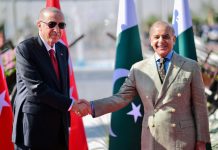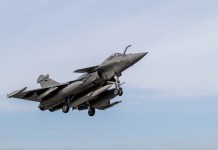A senior fellow at the Hoover Institution, Stanford, writes in The Times that sometimes “odd alliances/couples” are formed during cold wars in which relations become difficult to predict. Joseph Stalin and Mao Zedong are examples from recent history. Stalin gave him a cold shoulder when the Chinese leader visited Moscow in 1949.
With “Aim to Tame” US and India; China Eyes Global Super-Power Status: CIA
However Mao’s visit paid off as China eventually managed to get the Soviet support it “desperately needed” back then, but it did not come without a cost. In return, the People’s Republic of China had to fight the Korean War from the Soviet side.
The relationship took a sour turn in the 1960s when Mao and the new Soviet premier Nikita Khrushchev openly started criticizing one another. The bonhomie did not last very long and ultimately the “odd couple” ended up getting a “divorce” in 1969 with the two sides fighting a border war with each other.
In the present times, Vladimir Putin and Xi Jinping is that “odd couple”.
Ferguson points out that no two world leaders meet as often as the Russian and the Chinese leader. President Xi once even went to the extent of calling Putin his “best friend”. But the tables have turned for the most populous country in the world. Unlike the 1950s, now it is China who is calling the shots.
While China under Xi remains strikingly faithful to the doctrine of Marx and Lenin, Russia under Putin has reverted to tsarism.
Indian Air Force Activates Forward Airbase Near Chinese Border
America and its allies find this new odd couple even more baffling than the Stalin and Mao duo. In the mid-20th century, it was not hard to discern the menace represented by Soviet power. As a result, most west European leaders didn’t think twice about taking the American side when faced by a choice between USA and USSR.
Today, the power of China is mostly economic rather than military and that is what makes it so much more difficult to resist in present times. In what Ferguson likes to call “the Second Cold War”, there are a number of features that make it quite different from the first Cold War.
To begin with, it is no secret that America and China are deeply intertwined so much so that it has led some experienced observers such as the former Treasury secretary Hank Paulson to contend that “decoupling” is a delusion.
Moreover, it is not just trade and investment entanglement that we are talking about but the cultural dimension also. As of the year 2020, there are close to 370,000 Chinese students in US universities. By contrast, the sum total of all the Soviet citizens who came to America under the 1958 cultural agreement was just about 50,000 over 30 years.
Why Are Donkeys Vanishing From The Streets Of India & Pakistan?
Another major difference is that USA’s traditional allies are much less keen to align with Washington and against Beijing. Their disinterest in appearing hostile to Beijing has become very apparent with the recent Huawei fiasco.
Huawei is a Chinese telecommunications giant. The US government was left red-faced when it’s allies paid little heed to its warnings and demand for boycotting Huawei. Only a handful of countries, like Australia, have signed up for the boycott. Other allies like Britain and Germany have tried to skilfully move away from this while at the same time avoiding any confrontation with the US. This comes as no surprise particularly because no western competitor can match Huawei on price.
The Silicon Valley venture capitalist Marc Andreessen famously said that “software is eating the world”. But if software did the eating, the meal was cooked and served by hardware. That is why the Second Cold War is much more a battle over hardware than anything else.
In the article, Ferguson maintains that little will change with the signing of the “phase one” trade deal between America and China on 15th Jan this year and that it is nothing but an illusion. In reality, the battlefield of the Second Cold War has shifted away from trade to technology.
BrahMos Missile Now Capable Hitting Deep Into China; Entire Pakistan
American government is resorting to the help of not just other governments but also the world’s leading makers of semiconductor to eschew Huawei’s hardware. It has asked many of them, like the Taiwan Semiconductor Manufacturing Company, not to sell their top-of-the-range chips to Chinese firms. The same holds true for companies selling chip-making machines, such as Holland’s ASML.
Besides this, capital flows has also entered the battlefield. The US government intends to cut-down on American investment in China but the Chinese government is vigorously wooing western banks and asset managers.
Further, there is a fierce monetary contest. On the one side, America hopes to maintain an international financial system under which the US dollar is the dominant legal tender for trade and reserves. On the other, the Chinese tech giants Alibaba and Tencent are unveiling electronic payment platforms superior to anything the US has to offer, while the People’s Bank of China is about to launch a digital renminbi.
The “Second Cold War” shows no signs of abating and the role that Russia can play is anything but significant. Russia is not a serious player in either hardware or software. Moreover, it is financially marginal: nobody wants roubles, because US sanctions have so effectively isolated the Russian economy.
So what does Putin have to offer? A massive stockpile of predominantly outdated nuclear weapons and traditional military forces that have proved themselves modestly well but hardly brilliantly in Ukraine and Syria? Well, no. The answer is an unmatched genius for information warfare.
China refuses to recognise Taiwan’s de facto independence and seeks to subjugate it to the Communist Party. Taiwanese people have built a dynamic market economy and a vigorous liberal democracy. However, now that is constantly threatened by Beijing which has launched a massive disinformation campaign on the Taiwanese social media with the help of Moscow.
Indian Media Adding “Fuel to Fire” in China-India Border Conflict
Niall Ferguson argues that the Second Cold War will have more than one “odd couple”. If America wishes to succeed against China, Donald Trump and his successors would have to re-learn the lessons of late 20th-century diplomacy. Though allies matter frenemies are not too bad either.
If America were to contain the rise of China then its strategy in the 2020s must aim to replicate the 1971 manoeuvre. It should drive Putin and Xi apart and draw Russia into the western configuration. This alone can save declining Russia from being swallowed up by rising China.
Penned By: N.Ticku




